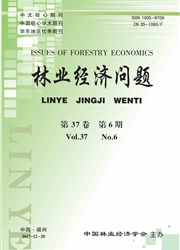

 中文摘要:
中文摘要:
基于供应链管理和共生理论,运用生命周期分析方法界定林纸低碳供应链的共生单元结构,从风险、成本、资源、收益和自组织等多维视角,探讨了林纸供应链合作共生的需求及其动力因素。研究结果表明:林纸低碳供应链的合作共生,源于规避绿色贸易壁垒,分散市场风险,降低交易成本,缓解木材供应短缺,提高共同收益等多重动力。进一步,从全生命周期的环境管理,共生交流机制完善和公平分配机制建立等方面提出相应建议。
 英文摘要:
英文摘要:
Based on the theory of supply chain management and symbiosis, the life cycle analysis method was used to define symbiotic unit structure of low carbon supply chain of forestry-paper indus-try. From a multidimensional perspective of disk, cost, resource, revenue and self-organization, the demand and dynamic factors of the low carbon supply chain were discussed. The research showed that symbiosis of low carbon supply chain for forestry-paper industry was resulted from multiple factors, such as avoiding green trade barriers, reducing transaction cost, alleviating the shortage of wood sup-ply, and improving the common benefits. Furthermore, relevant suggestions were put forward, such as implementing whole life cycle management of environment, mending the symbiotic exchange mecha-nism, and establishing equitable mechanism of profit allocation.
 同期刊论文项目
同期刊论文项目
 同项目期刊论文
同项目期刊论文
 期刊信息
期刊信息
